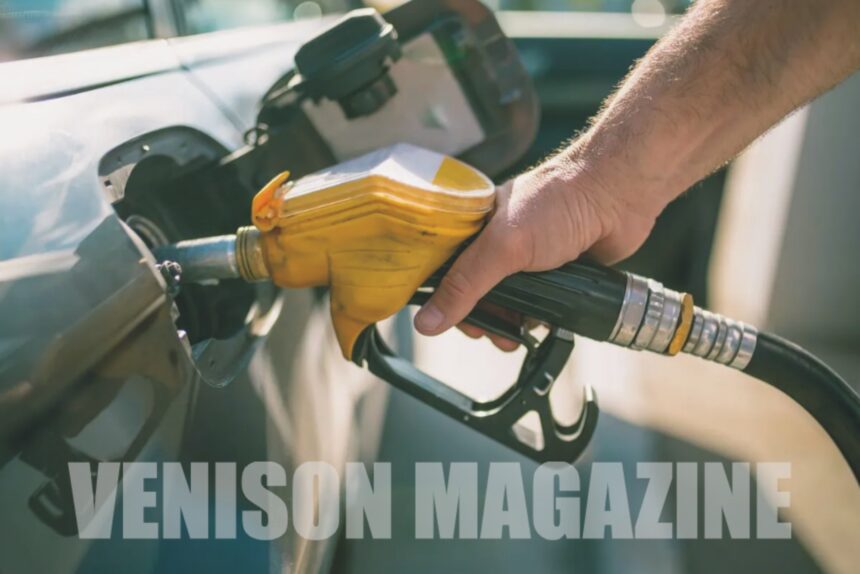Introduction to the Gasoline Pump
Every time you pull up to the gas station, there’s a familiar sight that greets you: the gasoline pump.
This unassuming piece of machinery plays a critical role in keeping our vehicles running smoothly.
Without it, aour daily commutes and road trips would come to an abrupt halt. But how much do we really know about this essential tool?
From its humble beginnings to modern advancements, the gasoline pump has undergone significant changes over the years.
Understanding its evolution helps us appreciate why it’s so vital for both consumers and fuel providers alike.
Let’s dive deep into what makes a gasoline pump indispensable in today’s automotive landscape. You might just find yourself looking at that simple device with newfound respect!
Evolution of the Gasoline Pump
The gasoline pump has come a long way since its inception. In the late 19th century, early models resembled hand-operated devices that required physical labor to dispense fuel. These rudimentary pumps were often found in general stores and used gravity to deliver gasoline.
As technology advanced, electric pumps emerged in the 1920s. This innovation transformed convenience at gas stations. Motorists could simply pull up and fill their tanks without manual effort.
In subsequent decades, self-service became popular. The introduction of digital displays made it easier for consumers to track their purchases and monitor fuel prices.
Today’s gasoline pumps are equipped with smart technologies like contactless payments and integrated safety features. They are not just functional but also designed for user experience, reflecting the ongoing evolution driven by consumer needs and technological advancements.
Components of a Gasoline Pump
A gasoline pump consists of several vital components that work in harmony to deliver fuel efficiently. At the heart is the motor, which powers the entire mechanism. It generates the force needed to move gasoline from storage tanks into your vehicle.
The pump body houses various parts like valves and filters. These elements ensure that only clean fuel reaches your engine while maintaining optimal pressure.
Another key component is the nozzle, which allows for a smooth transfer of gasoline into your tank. Its design prevents spills and aids in precision fueling.
The electronic control unit (ECU) manages all functions, ensuring safety features are activated during operation. Sensors also play a crucial role by detecting flow rates and shutting down if anomalies occur.
Each piece must work flawlessly together; even minor malfunctions can disrupt performance and affect efficiency significantly.
How Does a Gasoline Pump Work?
A gasoline pump operates through a simple yet effective mechanism. When you insert the nozzle into your vehicle’s fuel tank, it connects to an intricate system inside the gas station.
The process begins when you pull the trigger on the nozzle. This action engages a valve that opens and allows fuel to flow from underground storage tanks. A powerful electric motor drives this movement, creating suction that draws gasoline toward you.
As gasoline travels through pipes, it passes through filters designed to remove impurities. This ensures only clean fuel reaches your car’s engine.
Pressure sensors play a critical role as well. They help maintain optimal flow rates while preventing overfilling or spills.
Once you’ve filled your tank and release the trigger, another valve closes automatically—stopping any further flow of gasoline. The entire operation is seamless and efficient, ensuring that refueling is quick and hassle-free every time.
The Importance of a Properly Functioning Gasoline Pump
A properly functioning gasoline pump is crucial for vehicle performance. It ensures that fuel reaches the engine efficiently, allowing your car to run smoothly.
When a gasoline pump malfunctions, it can lead to poor acceleration and decreased fuel efficiency. This not only affects driving experience but also increases long-term costs at the gas station.
Moreover, a faulty pump may cause engine misfires or stalling. These issues can leave drivers stranded and result in costly repairs.
Regular maintenance helps identify potential problems before they escalate. Ensuring your gasoline pump is in top condition contributes significantly to overall vehicle health.
In an age where reliability matters more than ever, neglecting this component could mean sacrificing safety on the road. Prioritizing its upkeep leads to peace of mind while driving.
Common Issues with Gasoline Pumps and How to Prevent Them
Gasoline pumps can encounter a variety of common issues that affect their efficiency and reliability. One frequent problem is fuel line leaks. These can lead to wasted fuel and hazardous situations.
Another concern is clogs in the filter or nozzle. Dirt and debris can build up over time, obstructing the flow of gasoline. Regular maintenance helps keep these elements clear.
Electrical failures, such as malfunctioning switches or wiring, are also problematic. They may cause the pump to stop working entirely or operate erratically.
To prevent these issues, routine checks are essential. Inspect lines for wear or damage and replace filters according to manufacturer recommendations.
Additionally, keeping your equipment clean will minimize buildup in critical areas. Proper storage practices also contribute significantly to prolonging a gasoline pump’s lifespan by protecting it from environmental factors.
Advancements in Gasoline Pump Technology
Gasoline pump technology has witnessed remarkable advancements in recent years. One notable innovation is the integration of digital displays that provide real-time information on fuel prices and types. This helps consumers make informed choices at the pump.
Another significant development is the introduction of contactless payment systems. These advancements offer convenience, allowing drivers to pay for fuel without leaving their vehicles. Such features not only enhance user experience but also streamline the refueling process.
Smart technology is also becoming more prevalent. Some modern pumps can communicate with mobile apps, notifying users about nearby gas stations or tracking fuel consumption over time.
Moreover, there’s a growing emphasis on efficiency and environmental impact. Many gasoline pumps are designed to minimize spills and reduce vapor emissions during fueling, contributing to greener practices in the industry. These technological strides reflect a commitment to improving both functionality and sustainability within this essential sector.
The Future of Gasoline Pumps
The future of gasoline pumps is poised for significant transformation. As the world shifts towards sustainability, innovations in pump technology are emerging rapidly.
Smart pumps equipped with sensors and connectivity features will enhance user experience. They can provide real-time data on fuel prices, availability, and even suggest optimal fueling times to save consumers money.
Electric vehicles (EVs) are becoming prevalent, prompting discussions about hybrid fueling stations. These would seamlessly incorporate both gasoline and electric charging options to cater to diverse consumer needs.
Moreover, advancements in automation may lead to contactless payments and touchless dispensing systems. This shift could improve safety while enhancing convenience for users who prefer minimal interaction at gas stations.
As renewable energy sources gain traction, the integration of biofuels into traditional gasoline pumps might also become commonplace. This evolution reflects a broader commitment toward reducing carbon footprints without compromising accessibility or efficiency in fueling options.
Conclusion
Gasoline pumps are a vital component of our daily transportation infrastructure. They have evolved significantly over the years, adapting to new technologies and user needs. Understanding how they work and their importance can help drivers appreciate this often-overlooked piece of machinery.
Every time you fill up your tank, you’re relying on the efficient operation of a gasoline pump. It’s essential for ensuring that fuel reaches your vehicle with precision and speed. Keeping these machines in good working order is crucial for both safety and performance.
Common issues can arise, but with proper maintenance and awareness, many problems can be prevented. As technology advances, we see improvements in efficiency, safety features, and environmental considerations associated with gasoline pumps.
Looking ahead, it’s clear that while alternatives like electric vehicles are gaining traction, gasoline pumps will remain critical as long as traditional combustion engines exist. Their role is set to evolve alongside changes in energy sources but their necessity remains unchanged. The continued development in this field promises an exciting future for fueling innovation on the roads we travel every day.





